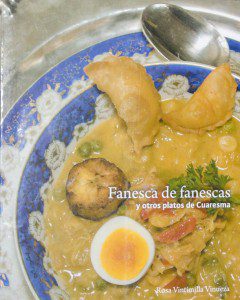 For the last couple of weeks, restaurants around Quito have been offering their version of fanesca. Throughout the Ecuadorian Sierra, this thick soup is served during Lent though communities along the coast have their versions as well. In fact, if you can find this book, Fansesca de Fanescas by Rosa Vintimilla Vinueza, you will have recipes for thirty nine varieties of fanesca made in this incredibly diverse country.
For the last couple of weeks, restaurants around Quito have been offering their version of fanesca. Throughout the Ecuadorian Sierra, this thick soup is served during Lent though communities along the coast have their versions as well. In fact, if you can find this book, Fansesca de Fanescas by Rosa Vintimilla Vinueza, you will have recipes for thirty nine varieties of fanesca made in this incredibly diverse country.
History of Fanesca
Although fanesca is served during a religious holiday of European origins, the original version was made by indigenous Ecuadorians long before the arrival of Spaniards. A soup made from grains and legumes was often served during Pawcar Raymi, a new year celebration that takes place in February, and again for Mushuc Nina, the spring solstice in March.
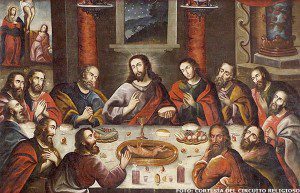 Like many native customs, the eating of this soup was adopted by the Catholic Church as a way to integrate indigenous practices with Catholic ones. The celebration of the new year and the spring solstice easily merged with the Catholic versions of Easter and the rebirth of Christ.
Like many native customs, the eating of this soup was adopted by the Catholic Church as a way to integrate indigenous practices with Catholic ones. The celebration of the new year and the spring solstice easily merged with the Catholic versions of Easter and the rebirth of Christ.
The soup became famous for its representation of Christ and his followers. The soup traditionally includes 12 different grains or legumes which represent the 12 apostles and the 12 tribes of Israel. It always includes bacalao, a dried salted fish which represents Jesus Christ.
The first published recipe for Fanesca appeared in 1882 and was credited to Juan Pablo Sanz. Several theories exist as to how fanesca came by its name. It might be a bastardization of the name Juana which, according to a chef at the Hotel Plaza Grande in Quito, was an indigenous women who made a well known version of the soup. Or that it came from the south of Spain where a dish called «franisca» is prepared or from Italy where they make «franesca». No matter, today the dish is definitely called fanesca. And the word is official. In 2001, the Real Academia Española added fanesca to the official Spanish dictionary.
Ingredients in Fanesca
The best fanesca is obviously homemade but I am not brave enough to face the preparation of each and every bean and legume. Each one must be prepared separately to make a proper fanesca. The work can take hours and is often a family affair. The grains and legumes most often include choclo (corn), chochos (Andean bean), habas (fava bean), arvejas (peas), lenteja (lentils), maní (peanuts), arroz (rice), pallares (lima beans) and fréjol or poroto (beans, white, red, pink, etc.), though every family recipe can be a little different.
Each bowl of soup is served with plátano maduro frito (fried sweet plantian), ajíes rojos (hot red pepper), hojas de perejil (parsley leaves), queso fresco (fresh cheese) y rodajas de huevos cocidos (hard boiled egg). In Quito, small fried empanadas are often served alongside as well. Though I’ve asked dozens of people for the meaning behind the decorative ingredients, no one has yet been able to tell me their significance.
If you are brave enough to try making your own fanesca, this recipe from Laylita.com is probably the easiest to follow.
And it’s not too late to try. Many families in Ecuador share homemade Fanesca on Good Friday. That gives you more than a week to prepare. Most claim that fanesca tastes better the day after making it!
If you’re not game for making your own, try visiting a restaurant which specializes in Ecuadorian cuisine. Tons of them offer their versions of fanesca, many originating from family recipes, and each and every one claim to make the best one!
Sources used for this article:
http://archivoqhistorico.quito.gob.ec/index.php/quito-y-sus-historias/36-origen-y-permanencia-de-la-fanesca
http://www.andes.info.ec/es/noticias/fanesca-historia-cultura-tradicion-ecuador.html

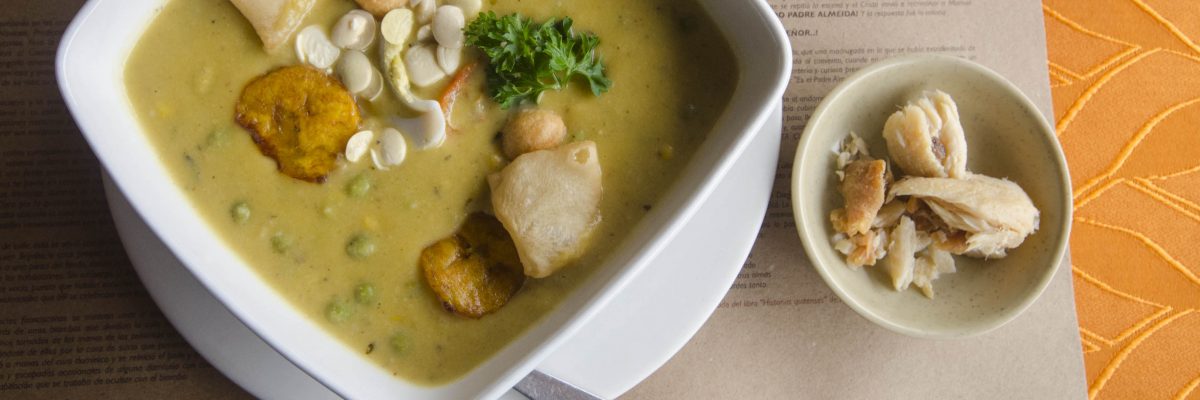

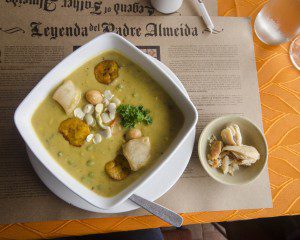
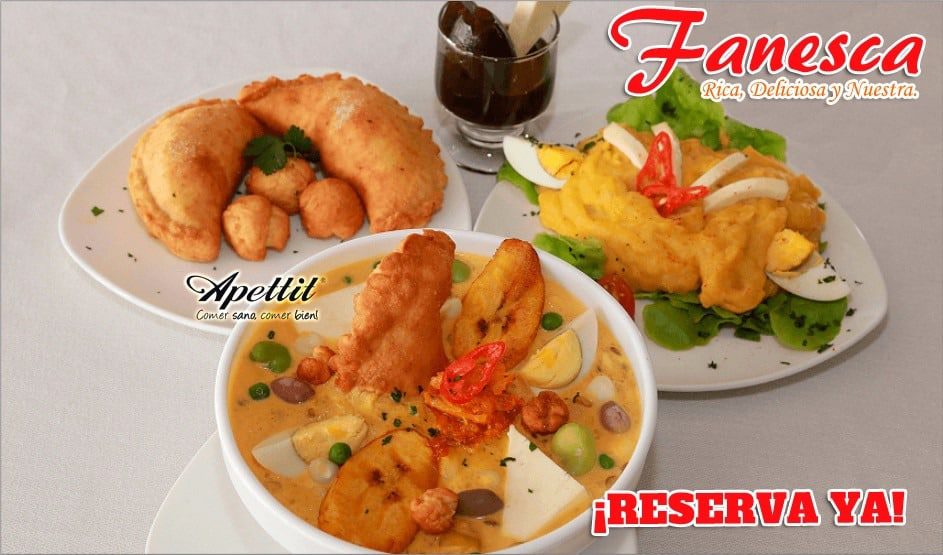
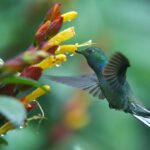
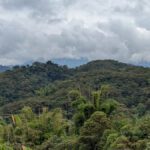





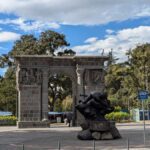



0 comentarios